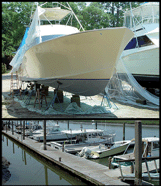Antifouling biocides are used to prevent the settlement and growth of organisms on submerged surfaces. Irgarol 1051 is currently among the most widely used organic booster biocides worldwide. This study reports Irgarol 1051, its major metabolite M1 (aka GS26575), and diuron concentrations found in selected California marinas. Seasonal water samples (n = 46) were collected during the summer and fall of 2006 from eleven marinas throughout Southern and Northern California. The samples were extracted using solid phase extraction and analysed utilizing liquid chromatography tandem mass spectrometry (LC-MS-MS) with electrospray ionization.
All three compounds were detected in all samples, representing a 100% frequency of occurrence and indicating widespread use around the sampled marinas. Irgarol concentrations ranged from 12 to 712 ng L−1 (average 102 ng L−1), M1 concentrations were 1–217 ng L−1 (average 31 ng L−1), and diuron concentrations were 5–27 ng L−1 (average 13 ng L−1). In general, concentrations of both Irgarol (15–712 ng L−1) and M1 (1–217 ng L−1) were greater in samples collected during the summer, corresponding to the peak of the boating season. The detected diuron concentrations in most cases were greater for fall samples (7–27 ng L−1), and probably represented a combination of non-agricultural (rights of way) and agricultural applications of diuron in California. The maximum Irgarol concentration detected in California marinas in summer 2006 (712 ng L−1) was five times greater than the Irgarol concentration suggested as the plant toxicity benchmark (136 ng L−1). Twenty three percent of samples from California marinas in this study exceeded this benchmark, suggesting that detected Irgarol concentrations may be high enough to cause changes in phytoplankton communities in the sampled marinas.

You have access to this article
 Please wait while we load your content...
Something went wrong. Try again?
Please wait while we load your content...
Something went wrong. Try again?


 Please wait while we load your content...
Please wait while we load your content...